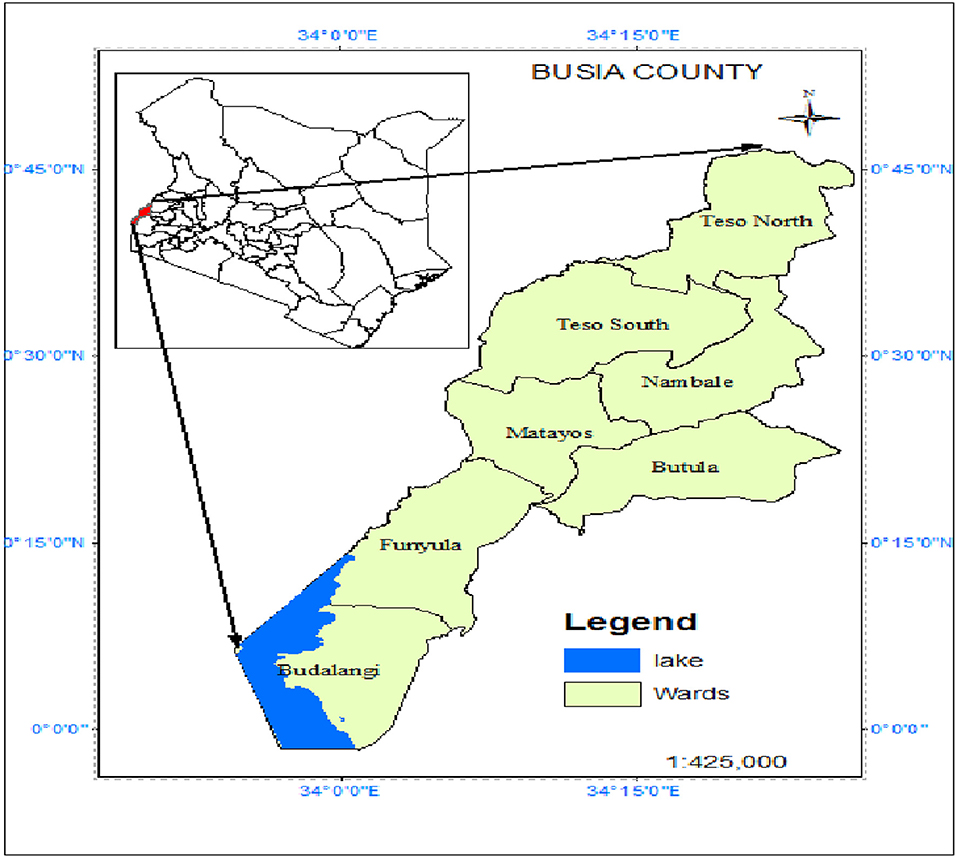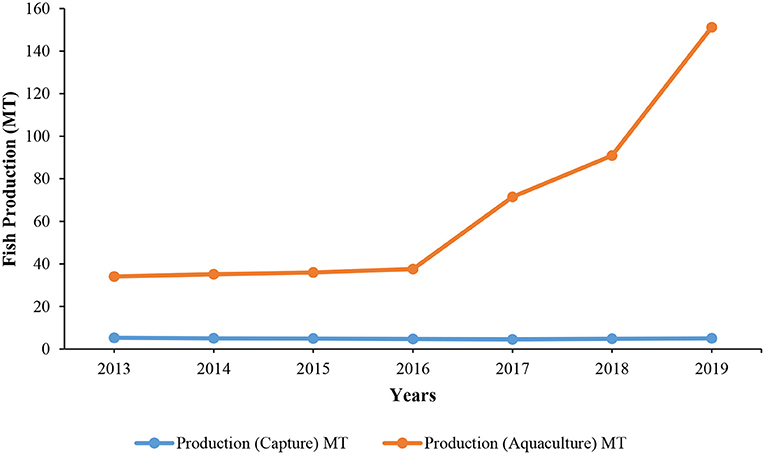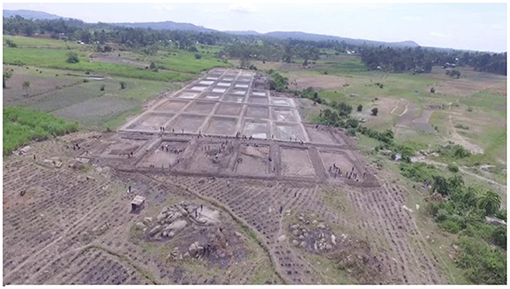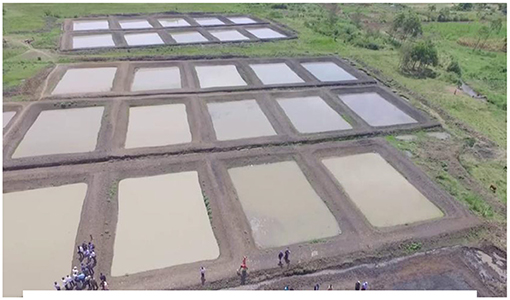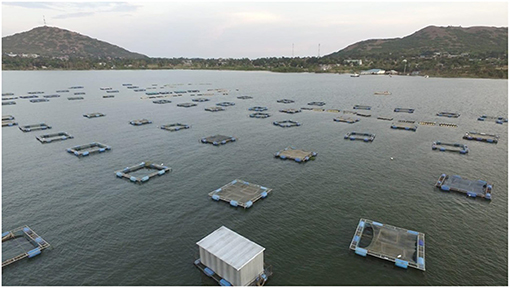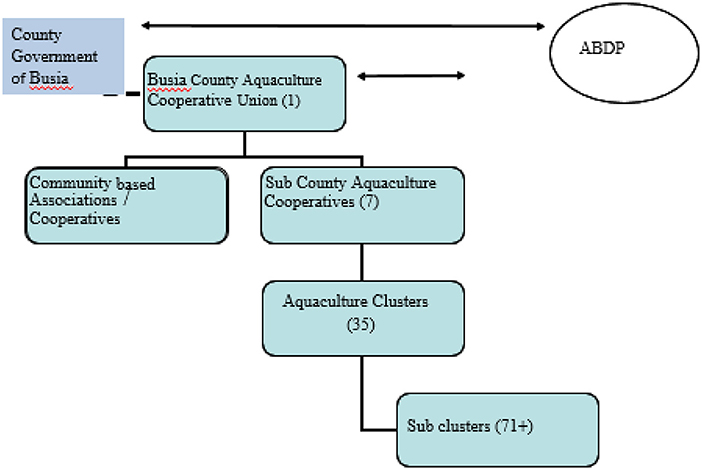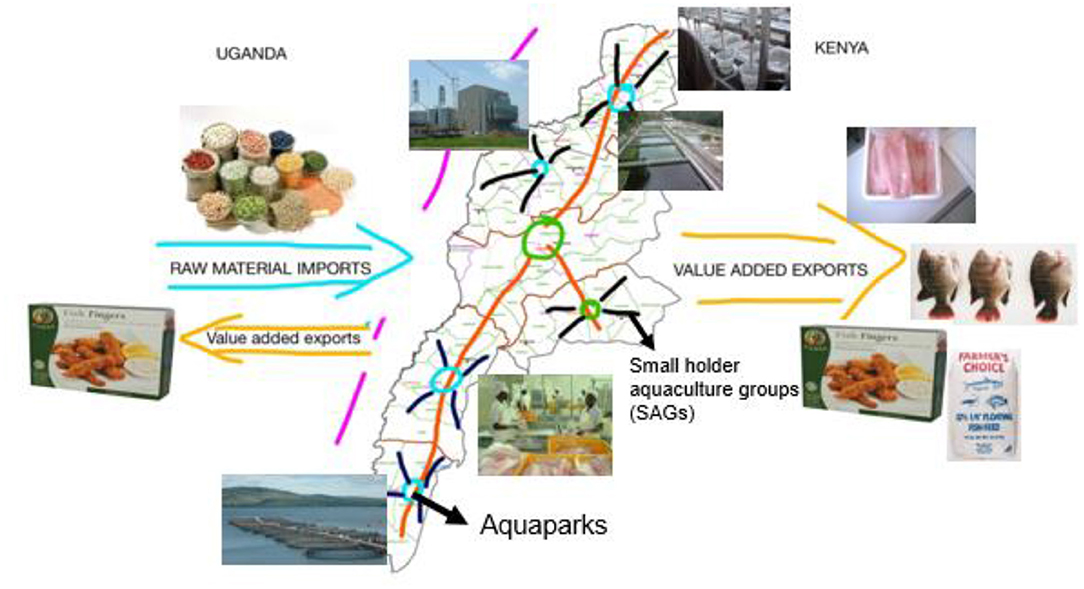- 1Directorate of Fisheries, County Government of Busia, Busia, Kenya
- 2Department of Animal and Fisheries Sciences, Maseno University, Maseno, Kenya
- 3Kenya Marine and Fisheries Research Institute (KMFRI), Sang'oro Aquaculture Research Center, Pap Onditi, Kenya
- 4Kenya Marine and Fisheries Research Institute (KMFRI), National Aquaculture Research Development and Training Center (NARDTC), Sagana, Kenya
- 5Department of Agriculture, Livestock, Fisheries and Agribusiness, County Government of Busia, Busia, Kenya
The dwindling capture fisheries has triggered an increase in Kenya's annual fish demand deficit, currently estimated at 553,000 MT. With the adoption of sustainable policies, aquaculture can bridge and surpass this deficit. Kenya's fish farming environment is however characterized by its highly fragmented production farms, which limit the dynamism and technical change needed to commercialize aquaculture. The global trend in the commercialization of food production is through the consolidation of farmlands. For example, most farms in the United States of America were also once small, but because of the policy of land consolidation, the farmlands average 1,000 acres. Over the past decade, much of Sub-Saharan African nations are experiencing a rise of 5–100 hectares except in Kenya, where the laws have exacerbated the situation. Amid declining agricultural productivity, farm-level efficiency and food security problems, land fragmentation is emerging as a key policy question in Kenya and is the single largest bottleneck, to aquaculture growth in Busia. A paradigm shift in the aquaculture development policy will enable aggregated production of fish under a fragmented land tenure. This study discusses the need to remodel the current fragmented and uncoordinated cluster-based smallholder aquaculture development strategy by adopting a hybrid aquapark concept. In this concept, the aggregated smallholder aquaparks are established and managed through specialized management service provision units and linked to adjacent smallholder aquaculture production clusters with a community-based coordination and support framework. The study further gives the application and socioeconomic experiences of the pilot aquapark concept of aquaculture development in Busia County. The aquapark model coupled with the deliberate establishment of aquaculture-enabling infrastructure has enhanced the efficiency, profitability, and productivity of aquaculture production. The realization of smallholder community-owned large-scale fish farms through aquaparks offers a window for dynamism and technical change necessary for the commercialization of aquaculture under a fragmented land tenure system.
Introduction
Aquatic foods are increasingly being recognized in the global food systems debate, thanks to the superior quality of fish protein for human nutrition (FAO, 2021). The need to feed a growing global population and respond to increased demand for fish puts pressure on natural resources and challenges the sustainability of marine, inland fisheries, and aquaculture development (FAO and World Vision, 2021). There have been growing calls for sustainable intensification of culture systems to improve aquaculture productivity and environmental sustainability through efficient delivery of technologies, innovations, and management practices (TIMPs). Yet, aquaculture production among smallholder farmers suffers from performance gaps, hence the need for sustainable and cost-effective interventions and investments that could significantly boost aquatic food supply and access to nutritious foods among the smallholder farmers (Henriksson et al., 2021).
The Kenyan freshwater aquaculture sub-sector is rapidly expanding in response to the declining capture fisheries and increasing national demand for fish (Ogello and Munguti, 2016; Munguti et al., 2021). With a total of 146,000 fish ponds and 6,000 cages, Kenya's annual aquaculture production is estimated at 24,000 MT but has enormous potential for growth through the adoption of sustainable technologies and policies. With the current productivity, there is already a significant gap between the projected fish demand and production, which is expected to hit 553,000 MT by 2030 (Obiero et al., 2019; Munguti et al., 2021). This will worsen the already low per capita average consumption of <5 kg/person/year and lead to high prices of fish in Kenya. Currently, there are various aquaculture technologies already in practice in Kenya, with different input-output models. The choice of aquaculture technology is important as the options have different potential economic, social, and environmental impacts. These range from earthen ponds, tanks, recirculating aquaculture systems, and cage culture systems at different levels of production and management. Pond aquaculture is still dominated by most smallholder fish farmers, who are working in rural isolated areas, hence missing the benefits of economies of scale. In Kenya, pond aquaculture targeting smallholder fish farmers was funded through a government-funded “Economic Stimulus Programme” (ESP) from 2008 to 2013 and has become an enterprise for a significant number of smallholders with mixed farming systems. The ESP model encouraged the construction of scattered and individualized ponds that mostly suffered from myriad challenges related to the theft of fish, poor extension services, and high input and operational costs. The ESP was largely disrupted by the devolution process that decentralized fisheries and aquaculture sub-sectors to respective county governments.
To this end, the Kenyan aquaculture sub-sector is mainly characterized by small-scale fragmented production systems, which are largely for subsistence purposes. The small-scale farmers are faced with a myriad of problems ranging from difficulty in accessing quality seed and feeds and access to markets for their fish. The fragmented small-scale production has made the acquisition and management of factors of production rather difficult, hence the need for a new aquapark approach. Aquaparks are aggregated smallholder fish ponds (landscape) or fish cages (seascape) established and managed through out-sourced specialized management service provision units and linked to surrounding existing smallholder aquaculture production clusters with a community-based coordination and support framework. The aquapark model integrates food production with environmental conservation and sustainability by linking different nodes of the aquaculture value chain. This study brings into focus an aquapark concept as a new fish farming model for smallholder fish farmers to stimulate socioeconomic growth in rural areas. On one hand, aquaparks promote a smallholder sector that produces for and supplies within local markets, and on the other hand, present an opportunity for a burgeoning larger-scale commercial sector consisting of a small number of pioneering lead firms which can shape how the value chain supplies domestic and urban markets for employment and economic growth. Using the case study of Busia County, this study documents the methodical approach to the aquapark concept, political economy, socioeconomic success, and challenges. It also gives an account of the adaptability and replicability of the concept in other countries.
Methods of Literature Search and Review
The scoping review methodology and systematic reviews approach by Arksey and O'Malley (2005) and Levac et al. (2010) were adopted in this study for the comparison between the various aquaculture production models. The review and comparisons focused on the comparison of the efficiency and production potentials of different aquaculture production models among smallholder farmers, especially in the United States of America and in Kenya, particularly Busia County. To meet the set objectives, a wide range of keywords (closely related to aquaculture, food security, food production models, and rural livelihoods) were searched in online database tools and scientific domains of Science Direct, Research Gate, Google Scholar, and Web of Science. To further narrow and refine the search, Boolean operators (“OR”, “AND,” and “NOT”) were appropriately used in the various databases and search engines.
The Aquapark Concept: A Game-Changer for Kenya's Aquaculture Sector
Aquapark entails an aggregation of fish ponds or cages within a specific area for efficient production and management. Whereas, landscape aquapark is focused on ponds, seascape aquapark involves cages in open natural waters. An ideal aquapark model should be a one-stop-shop for all nodes within the fish value chain. The model should enhance fish production while integrating environmental conservation measures such as nutrient cycling, water conservation, waste minimization, and stakeholder integration. The key enablers for model aquapark include cooperative unions, retail market operators, extension support, policy and programs, and capital and finance services (Figure 1). The production nodes (fishponds and cages) are mainly operated and owned by fish farmers' cooperatives that produce fish supported by the input supply nodes (fish feed processors and suppliers, fish hatcheries). The processing node comprises the fish traders, processors, and value addition as well as the cold storage facilities and market linkages. Wastes and byproducts generated from these systems and the environment are biologically degraded by Black Soldier Fly (BSF) which are then used as a protein source in fish feed formulation (Joly and Nikiema, 2019). The byproducts of the BSF are high-quality organic manure mixed with pond effluents for crop production. This bio-circular economy process reduces environmental pollution by converting the wastes into useful products. The projected indicators of rural development include increased employment, household income, food security, improved dietary diversity, and health.
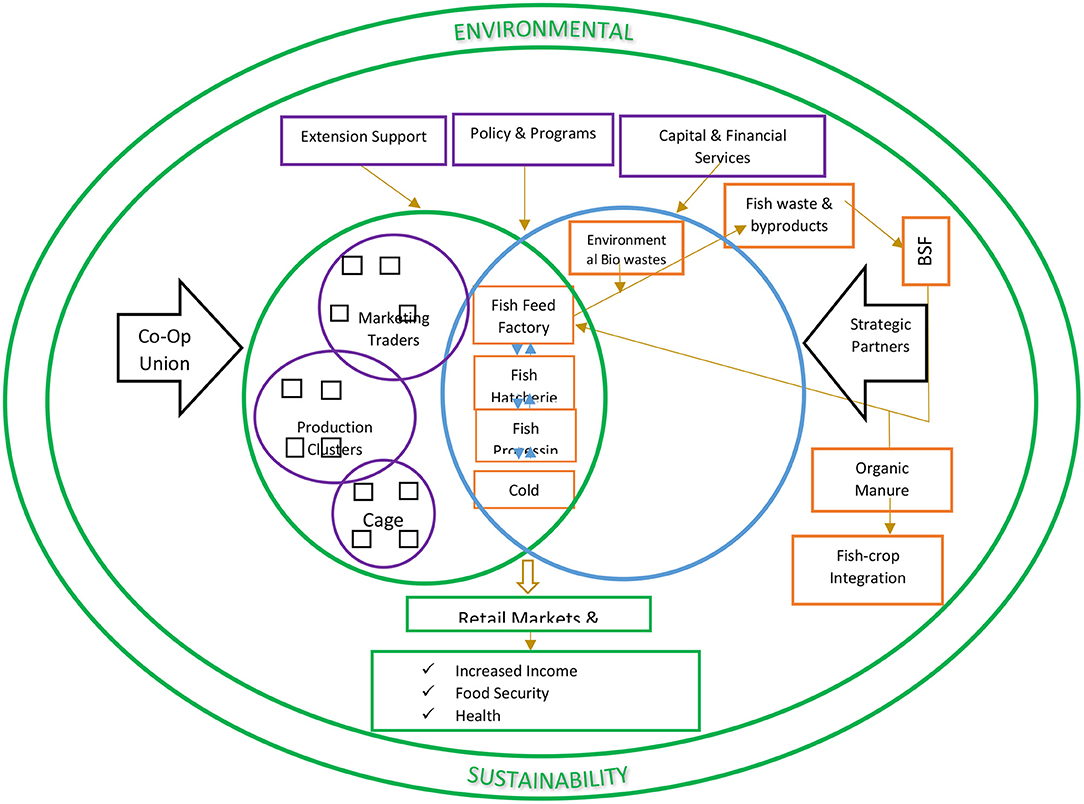
Figure 1. Conceptual framework and schematic flow of an ideal aquapark unit showing all components of food production and value chain linkages; BSF, Black Soldier Fly.
For environmental sustainability, the seascape aquapark concept can be accompanied by Integrated Multitrophic Aquaculture (IMTA) model, which is an extractive aquaculture strategy to capture wastes generated from the fish cages within the lake ecosystem (Outa, 2021). Here, aquatic plants and mollusks (filter feeders) can be used to extract the excess nutrients in the water from uneaten fish feeds. The plants and mollusks are additional ingredients for the formulation of fish feeds and other products (aquatic foods). This model ensures a “blue-nutrient cycling” process that conserves the environment while improving nutrition diversity and enhancing food security (Marta et al., 2020). This will not only enhance environmental protection by reducing the possible negative impacts of the activities on the environment but also ensure efficient nutrient use and resource use efficiency. To facilitate operations in the various nodes, extension support, favorable policies, and financial and capital services are crucial. Strategic partners like investors, research institutions, and universities can propel the system. This will provide a supportive environment for the operation and sustainability of the aquaparks. The products can then be sold locally, regionally, or internationally through the support of business service providers. These providers help create market linkages, offer business and financial management services, and links to other business services like loans and other credit services. The goal of the concept is to improve the income of the local communities, improve food and nutrition security, create employment opportunities, and enhance health while promoting environmental conservation and sustainability.
Consolidated Farming: Lessons from the United States of America and Sub-Saharan African Nations
In the early 1900s, more than half of the Americans were either farmers or lived in rural communities (Ikerd, 1996). Most of the farms in the United States of America were diversified to produce a variety of crops and animal species together on the same farm, in complementary ways (MacDonald et al., 2013). Farmers were skilled in a wide range of trades and had autonomy over how to manage their crops and animals. Consolidation in agriculture is the shift toward fewer and larger farms, usually because of large farms getting larger and smaller farms going out of business. In the late 1950s, the United States Secretary of Agriculture, Ezra Taft Benson, exemplified government pressure to consolidate when he called on farmers to “get big or get out” (Zimdahl, 2012). Between 1950 and 1997, the average United States farm more than doubled in size, and less than half the farms remained (Hoppe and Banker, 2006). The consolidated production model was applied in the meat, dairy, and egg production sectors. Other industries in the food system, including animal slaughtering and processing, also underwent major consolidation. The big question the authors are asking is “What drove the push to consolidate?” New technology, including chemicals and larger tractors, allowed farmers to work in larger areas of land with less labor (MacDonald et al., 2013). Government policies encouraged farmers to scale up their operations. Farmers were motivated by economies of scale—the economic advantage of producing larger numbers of products. A chicken farmer, for example, might turn a greater profit on each bird by housing a larger number of birds. As a result of consolidation, most food production in the United States now takes place on massive-scale operations. Half of all the United States cropland is on farms with at least 1,000 acres (MacDonald et al., 2013). The vast majority of the United States poultry and pork products come from facilities that each produce over 200,000 chickens or 5,000 pigs in a single year, while most egg-laying hens are confined in facilities that house over 100,000 birds at a time (U.S. Department of Agriculture, 2014).
Rising rural population densities across Sub-Saharan Africa, coupled with rural populations that retain family farms regardless of their primary source of employment, suggest an evolution toward smaller farm sizes across the region (Jayne et al., 2003; Masters et al., 2013). The fact that most farms in the region are becoming smaller is therefore not surprising. Rather more surprising are the indications of important changes in farm structure associated with rapid expansion in the number of medium-scale farms, defined here as farm holdings between 5 and 100 hectares, many of whom live in urban areas (Jayne et al., 2014; Sitko and Jayne, 2014). Analysis indicates that much of Sub-Saharan Africa is experiencing major changes in farmland ownership patterns. Among all farms below 100 hectares in size, the share of the land on small-scale holdings under 5 hectares have declined except in Kenya. Medium-scale farms (defined here as farm holdings between 5 and 100 hectares) account for a rising share of total farmland, especially in the 10–100-hectare range where the number of these farms is growing especially rapidly. Medium-scale farms control roughly 20% of total farmland in Kenya, 32% in Ghana, 39% in Tanzania, and over 50% in Zambia. The number of such farms is also growing very rapidly, except in Kenya (Jayne et al., 2016). The rise of medium-scale farms is affecting the region in diverse ways that are difficult to generalize. Many such farms are a source of dynamism, technical change, and commercialization of African agriculture (Jayne et al., 2016). However, medium-scale land acquisitions may exacerbate land scarcity in rural areas and constrain the rate of growth in the number of small-scale farm holdings. Medium-scale farmers tend to dominate farm lobby groups and influence agricultural policies and public expenditures on agriculture in their favor.
Kenya's 2009 National Land Policy emphasizes the need to allocate and use land in an economically viable, socially equitable, and environmentally sustainable way. According to the World Bank datasets, about 10% of land in Kenya is considered arable and with the current population of about 45 million, the population is expected to grow by 2050 up to 55 million, further increasing pressure on land. Traditions, customs, and formal succession laws promote and regulate the transfer of property from one generation to another. The new constitution of Kenya may further compound this problem of land fragmentation since legally daughters married off to another family can now come back and claim inheritance and succession in the property sharing including land. The Land Control Act in Kenya does not define the minimum land size considered economically viable but the Land Control Boards are left to determine the viable land sizes. There is an urgent need therefore to inform policy on the most sustainable way to guide land use in Kenya amid the increasing population and declining scale of food production and farm-level productivity (Kiplimo and Ngeno, 2016).
Kenya's Aquaculture Sector
Kenya has 1.4 million hectares of land suitable for aquaculture, with the capacity to produce 14 million tons of produce worth over Ksh 50 billion annually (KMFRI, 2021). Despite the massive potential for aquaculture production, the contribution of the sub-sector to the gross domestic product (GDP) of Kenya is still dismal. Today, Kenya is food insecure requiring imports of various food commodities (including frozen tilapia from China) and does not export any aquaculture products (Ogello et al., 2022). Nonetheless, public interest in aquaculture has been on an upward trajectory since 2015, when most farmers realized the potential of fish production from the government-funded ESP project (Munguti et al., 2021). Based on recent national census statistics, Kenya has 146,000 fish ponds and 6,000 cages [Kenya National Bureau of Statistics (KNBS), 2019]. Cumulatively, aquaculture produces paltry 24,000 tons of fish annually. Data on annual fish production from the 6,000 cages are still not clear as most information is unreported. Innovative technologies are needed to improve the productivity of the fish ponds if sufficiency in fish production must be realized in Kenya. The distribution of households rearing fish in ponds, in the top 10 counties in Kenya in 2019 is presented in Figure 2. It is expected that the number of fish farmers will increase to 52% by 2025 (Lynch et al., 2017).
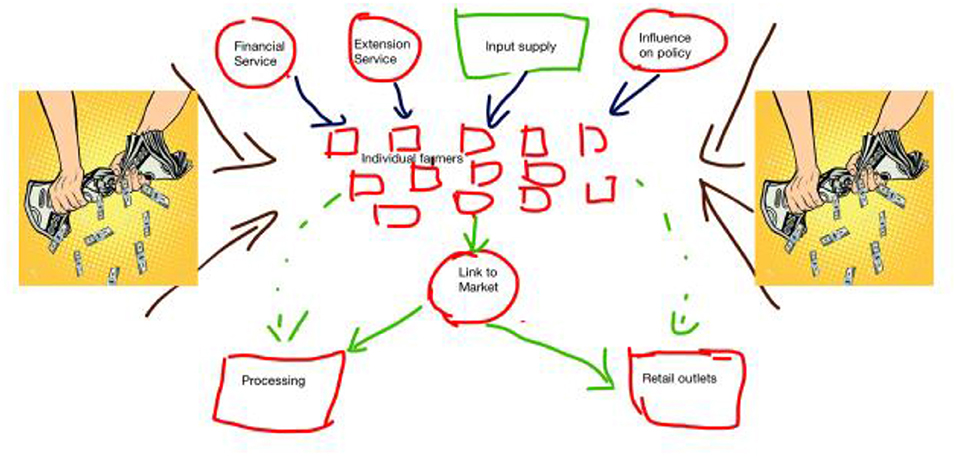
Figure 2. Illustration of the squeezing pressure on smallholder farmers' profit under fragmented production systems.
Given the devolution of the fisheries and aquaculture sector following the promulgation of the 2010 Constitution in Kenya, various counties have reorganized strategies for exploitation of the aquaculture value chain. Within Busia County, there have been several interventions to support aquaculture activities including PALWECO, LVEMP I and II, NALEP, Economic Stimulus Programme (ESP), and Millennium Village Project (MVP). Most of these projects have focused on smallholder farmers in the county but the livelihood status of the farmers, i.e., poverty and food security levels, have remained the same despite interventions. The smallholder fish farmers are still struggling to survive on less than a dollar per day, which is further compounded by several constraints in the aquaculture sector such as affordability of high-quality fish seed and feed, access to timely and accurate information, and efficient input supply and marketing systems. Several assumptions have been made by the past projects in terms of assisting poor rural farmers. Some of the programs targeting rural smallholder farmers assume that when farmers are trained and mobilized into groups and given funds, they can operate a successful enterprise; with a further expectation that group funds contribution can enhance enterprise ownership and community will be sophisticated enough to compete in the global market. These assumptions have proved not to work in many aquaculture programs leading to massive failures. Based on these previous failures, the Busia County Fisheries aquaculture model assumes that a centralized aquaculture enterprise will enhance ownership and is a sustainable way of producing fish hence alleviating rural poverty, in terms of food security and nutrition, income generation, and creation of employment opportunities.
The Squeezing Pressure in Fragmented Smallholder Fish Farms
One of the critical constraints of aquaculture in Kenya is the lack of access to affordable and high-quality inputs such as feed and seed (Lynch et al., 2017; Munguti et al., 2021), technical knowledge and rural advisory services, and affordable transport and storage facilities (Brummett et al., 2008). Moreover, due to the highly fragmented production systems, aquaculture cannot compete against well-coordinated and organized producers in other value chains. Increasing globalization and accompanying liberalization of trade in aquaculture products are tending toward the marginalization and exclusion of individual small-scale producers. Even though a large proportion of global aquaculture production currently comes from small-scale farmers, they face major challenges to remain competitive and participate in modern value chains (FAO, 2011). For instance, due to the high cost of production which squeezes farmers' profit, they have to sell their harvested fish at a higher price to meet the cost of production (Figure 2). This problem is exacerbated by the importation of frozen tilapia from China. The imported fish is generally cheaper than the locally produced tilapia making them a preferred product for most households. This means that farmers, having incurred high production costs, are forced to sell at prices dictated by the prevailing market forces. As a result, the farmer ends up operating a non-profitable enterprise.
“Fish from China is making life difficult for us in the market, we sell our fish at very low prices and we can hardly make any profits,” posed a fish farmer and seller in Busia County.
The Aquaculture sector, as with other parts of the global food industry, has experienced increased market concentration, meaning that there is an increasingly smaller number of companies operating at any particular stage of the market chain, enabling them to influence prices and giving them considerable market power, weakening the position of farmers (Penrose-Buckley, 2007). Thus, it is no longer enough for fish farmers to focus solely on increasing production efficiency, but also on marketing and integrating successfully into the production chain. This encompasses producing high-quality and safe products, accessing the required production inputs at affordable costs, and engaging in on-farm management practices that are highly efficient and sustainable, taking account of the surrounding environment and social issues related to production (Phillips et al., 2007). The Kenyan national government has done much regarding promoting aquaculture in the counties. Some of the efforts have been, employing highly competent and trained extension personnel who are on monthly salaries and input support programs to rural farmers. However, these enterprises have failed to take off because farmers are operating on high production costs which are higher than the prevailing market prices. Therefore, until a model is found that can assist and guide rural poor farmers to produce below the current market price of the product with economically viable markup, and to break even, there is no way we can alleviate rural poverty. This calls for a paradigm shift in the way aquaculture enterprises are managed and run within the county and beyond.
Aquaculture Production in Busia County
Busia County is located in western Kenya. It borders Kakamega County to the east, Bungoma County to the north, Lake Victoria and Siaya County to the south, and Busia-Uganda to the west. The county has about 893,000 people and spans about 1,700 square km making it one of the smallest counties in Kenya (Figure 3). With a total of 239 cages and 2,111 fish ponds, Busia County produces ~160 MT annually (Figure 4). Capture fisheries from Lake Victoria and Turkana are other sources of fish in Busia County. Both fish from capture and culture converge at the Busia border fish market, which transits fish to other countries, i.e., Uganda, Congo, and South Sudan. However, with the rising demand for fish, and visibly stagnating capture fisheries (Figure 4), aquaculture initiatives have become important alternative sources of fish. Busia County hosts the largest tilapia and catfish hatchery at Wakhungu in the Samia Subcounty, which has a capacity of producing 1.5 million fingerlings annually. Other fish farming structures include seascape aquaculture (cages) in Bunyala and Samia Subcounties and landscape aquaparks in Samia, Teso South, Butula, and Matayos Subcounties. Besides these aggregated aquaculture production units, other aquaculture enabling infrastructure established by the county include a fish eatery at Wakhungu in the Samia Subcounty, fish auction centers, i.e., a fish trans-shipment market at the Busia border point, cottage fish feed plant at Nasewa in Matayos Subcounty, ICT support, and a cold-chain facility to enhance efficiency, profitability, and productivity of the aquaculture production.
Aquapark Concept in Busia County
Motivation Factors for Aquapark Development
The farming environment in Busia is characterized by its highly fragmented production structure consisting of tiny farms that average below five acres, and therefore, limiting the dynamism and technical change needed to commercialize Kenya's aquaculture and help bridge and surpass the fish deficit. To address this fragmented production structure which is the single largest bottleneck, to increase primary production and productivity among smallholder fish farmers in Busia County and the desire to reduce malnutrition and alleviate rural poverty, motivated the initiative to design aquaparks by the Fisheries Directorate in the County Government of Busia. In addition, favorable climatic conditions coupled with the availability of aquatic resources, i.e., Rivers Sio and Nzoia, springs, streams, and dams have promoted aquaculture development. Today, the aquapark model has been lauded to have increased aquaculture production in the Busia County and with a potential for replicability in other counties across the country.
Toward supporting poverty alleviation in the rural areas, Busia's Agriculture sector has further highlighted Key Result Areas under the County Integrated Development Plan (CIDP) and Strategic Plan which include increasing primary production and productivity; commercialization of agriculture through agro-processing and value addition and re-focusing extension institutions and processes from the traditional government extension through outreach to extension through practice.
Relevance of Aquapark Concept to National and Regional Food Production Priority
Fisheries is a key sector contributing greatly to the Kenyan economy. The fisheries sector contributes an average of 0.5% to Kenya's Gross Domestic Product (GDP), and it is providing direct employment opportunities to over 500,000 people and supports over 2 million other people indirectly (KMFRI, 2017). About 72% of Kenya's total population lives in rural areas and 70% of that population depends on agriculture for its livelihood (World Bank, 2020). The 2020 Comprehensive Poverty Report by the Kenya National Bureau of Statistics (KNBS) further indicates that more than half (53%) of the Kenyan population or 23.4 million is multi-dimensionally poor (deprived of at least three basic needs, services, or rights out of the seven analyzed, i.e., physical development, nutrition, health, education, child protection, information, water, sanitation, and housing). The report found that children comprise the largest share of the multi-dimensionally poor (48%), followed by youth (25%). Multidimensional poverty incidence in rural areas (67%) is more than twice the incidence in urban areas (27%). The report also found that one in every three Kenyans (36% or 15.9 million) are monetary poor. Monetary poverty incidence in rural areas (40%) is higher than in urban areas (29%), especially among youths and adult women and men. It is against this realization that the fisheries sector was identified as a potential source of food security, poverty reduction, and employment creation among the rural youths, women, and men as envisaged in the economic pillar of the Kenya Vision 2030 and Third Medium Term Plan (MTP III) 2018–2022.
The aquapark concept also resonates positively with Africa's objective on sustainable food and malnutrition security under Science, Technology and Innovation Strategy for Africa 2024 (STISA, 2024), Africa's development agenda 2063, and East Africa's Sustainable Development Goals (SDGs). The importance of aquaculture is recognized in Kenya's Vision 2030, the Agricultural Sector Transformation and Growth Strategy (ASTGS 2019–2022), and the President's Big Four priority agenda for 2017–2022, which emphasizes the importance of 100% food and nutrition security for all Kenyans. The purpose is to increase sustainable aquaculture production that is relevant to the welfare of local communities and sustainable development through aquaculture development. This can only be achieved through aggregated aquaculture production as demonstrated in the Aqua Pack model.
Despite having had several programs in the aquaculture sector geared toward increasing productivity, income, and food security systems, poverty levels have since remained the same among smallholder farmers in Busia County and Kenya in general. From these past interventions, it is evident that we have not been producing solid enterprises. The Directorate of Fisheries Busia has therefore proposed aquaculture parks production systems that have since been successful to operate a sustainable and profitable aquaculture business for alleviating rural poverty thus increasing food and nutrition security, and income and creating employment opportunities. These production parks cage fish in the open waters of Lake Victoria and land aquaculture parks in earthen ponds. An aquaculture park is similar to an industrial estate in the sea (or large lake), wherein aquaculture plots are leased to investors/aquaculture farmers and infrastructure, utilities, and technical services are provided by the government or a private investor (White et al., 2013).
Methodical Framework for Aquapark Development
Landscape Aquapark Model in Bukani, Busia County
The establishment of an aggregated aquaculture park requires strategic planning and execution. This is especially crucial considering the uncoordinated production by the individual smallholder farmers. Some of the strategies employed by the Busia County Fisheries office are discussed below.
Step 1: Stakeholder analysis and baseline survey
A stakeholder analysis was carried out to determine the most important stakeholders and their level of influence in the aquaculture value chain. The stakeholders included the community, cooperative groups, researchers from training and research institutions, political representatives, civil society, and government officials (county and national). A baseline survey analysis was carried out by the Directorate of Fisheries in Busia County to determine the performance, challenges, and opportunities of the local aquaculture farmers. This was carried out through a swot analysis framework. The baseline analysis identified the need to create and paradigm and shift it toward more sustainable and cost-effective fish production systems.
Step 2: Training and sensitization of stakeholders
The stakeholders were trained and sensitized on the need to form local cooperatives to improve bargaining power in the fish farming business. The awareness creation seminars and workshops were done at the ward level by trained frontline extension officers and researchers. Training was done using designed modules that included fisheries legislations and policies, and aquapark guidelines.
Step 3: Site identification for establishing aquapark
Through consensus-building and co-creation strategies, agreement of communities, local leaders, and government officials was sought on the locations of the aquapark. An approved site selection checklist was used to determine a suitable site for the landscape aquapark site. For seascape aquapark, cage suitability map (Aura et al., 2021). The first landscape aquapark was developed in the Bukani area (Plate 1) in Samia Sub-county while others were later established at Kamarinyang (Plate 2) in Teso South Sub-county, ATC (Plate 3) in Matayos Sub-county and Siunga (Plate 4) in Butula Sub-county. Meanwhile, a seascape aquapark was developed on the Mulukoba beach (Plate 5) in Port Victoria.
Step 5: Registration of beneficiaries
Identification of beneficiaries was based on a criterion developed by the Directorate of Fisheries. Beneficiaries' registration details were captured in a register developed by the Directorate and provided through the office of the respective subcounty fisheries officer. The complete register was then verified by the County Director of Fisheries. For the cage-based aquaparks, it was agreed that the maximum number of cages per investor was 10 cages, while for pond-based aquaparks, a minimum of 3 fishponds was agreed upon per beneficiary. Where the land is leased, the owners of the land agreed to have an extra pond for every landowner.
Step 6: Aquapark Project Management Committee (PMC)
Local management organs such as PMC were vital for the sustainability of the project. Each PMC contained 9–15 members, who were duly registered members with the cluster, residents of the ward hosting the aquapark, and must have been fish farmers. Nomination forms were issued to candidates competing for committee membership through the subcounty fisheries officer in charge who is the returning officer.
Step 7: Election of aquapark management committee members
The aquapark PMC was elected by secret ballot at an assembly of the beneficiaries. The elections were supervised by the Subcounty Fisheries who is the returning officer. The records of those voting and the nomination forms were kept and stored safely by the returning officer to ensure accountability.
Step 8: Aquapark rules of procedure
In addition to the standard operating procedures (SOPs) developed for the management of the aquapark, the assembly is also required to make its own rules of procedure which are in line with the fisheries regulations (as guided by the Directorate of Fisheries) to govern its internal operations. These rules of procedure must be approved by the County Director of Fisheries.
Step 9: PMC/beneficiary capacity building
For effective management of aquaparks, substantial capacity building is required. The Directorate of Fisheries in collaboration with the aquapark management committees and other agencies has been facilitating the identification of the training needs and capacity building of the PMC and aquapark beneficiaries.
Seascape Aquaparks in Mulukoba Beach, Busia County
The Directorate of Fisheries in Busia County is using farmer organizations to leverage challenges associated with a fragmented aquaculture production structure. The farmer organizations comprising smallholder farmers are organized in a given space to establish aggregated production parks also called aquaparks. A business management service provision unit is established comprising technical staff from the Directorate to offer management services to the farmer organizations. The smallholder farmer organization is supported with seed capital to start up an aggregated large-scale production enterprise. The enterprise is managed on behalf of the “investor” small-scale farmers at a service fee by the business management service unit. The lake-based component of the concept has been rolled out in the open waters at the Mulukoba Beach in Lake Victoria. Under this component, 239 fish cages have been installed and stocked at different intervals to allow for a consistent supply of fish to the market. Additionally, the land-based aqua park component is in operation in Kamarinyang in Teso South Subcounty (100 fishponds), ATC Aquapark in Matayos Subcounty (20 fishponds), Bukani, Samia Subcounty (100 fishponds), and Siunga in Butula Subcounty (70 fishponds).
Improving Productivity of Aquapark Through Scientific Innovations: Role of Collaborators
Since the rolling out of the aquapark model in Busia County, various scientific gaps were identified during the implementation period. As a result, in the efforts to build synergy and address the gaps, the Busia County Government in collaboration with several research institutions (KMFRI, KALRO, and ICIPE) and universities (Maseno University, Egerton University, JKUAT, University of Eldoret -UoE) rolled out several adaptive research technologies through Kenya Climate-Smart Agriculture Project (KCSAP) funding to leverage on some of the scientific challenges which cropped up. For instance, pond-based biofloc units were introduced into the landscape ponds to boost natural pond productivity and reduce the cost of feed by the Maseno University (Plate 6). The biofloc system involves confinement of environmental biowastes in a cage-like structure and is stocked with molasses, livestock manure, and abattoir wastes to encourage the proliferation of billions of bacteria cells that flocculate to form nutritious pellets for fish (Ogello et al., 2019; Muthoka et al., 2021). The bacteria are also a food source for live food resources (rotifers, cladocerans, copepods, and other plankton communities), which are perfect food for young fish (Ogello et al., 2019). This improves fish survival and shortens the culture period. In addition, biofloc systems ensure biosecurity and improve water quality in the ponds (Obwoge et al., 2022). This efficiency based on integration and innovation is in line with FAO's global food security by focusing on nitrogen efficiency potentials and local production (He et al., 2021). It is also important to recognize the fact that nutrient utilization in food production is a crucial matter, especially for environmental protection and different areas require different approaches to explore the potential of nutrient utilization.
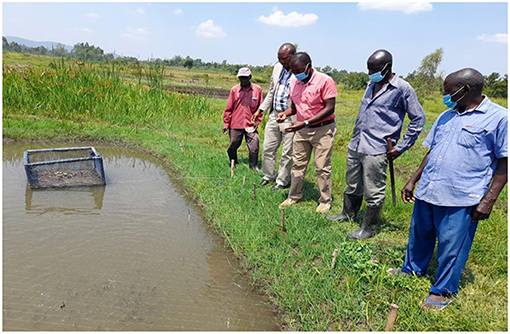
Plate 6. Demonstration of pond-based biofloc unit in the Bukani Aquapark. The biofloc unit promotes natural primary production that improves survival and enhances the growth rate of cultured fish. Picture courtesy of Dr. Erick Ogello.
In the seascape aquapark, the use of high-density polyethylene cages has been promoted to replace metallic cages, which are corrosive by UoE and Maseno University. Larger HDPE cages of up to 15 m diameter have been installed in Mulkoba beach, Busia County, to boost fish production. To enhance market linkages and promote fish value addition, an online Aquaculture Market Information system (AquaMIS) has been set up by KMFRI. In addition, value addition and post-harvest technologies equipment have been procured and delivered by KMFRI to the farmers in the efforts to increase incomes and improve livelihoods among the fisherfolk communities. KMFRI has also supplied farmers and hatcheries with improved Nile tilapia broodstock and seeds produced using YY technology to promote improved fish strains and health management practices for climate-smart aquaculture. JKUAT has set up a Black Soldier Fly (BSF) production plant in Nasewa, Busia County, to upscale the production of insect-based protein-rich feeds for enhanced nutrition and health of fish. These efforts are all geared toward increasing the value of aquaculture production from the current value of Kshs 200 million to at least Kshs 1 billion annually and attain a 400% increase in the volume of aquaculture production to 4,300 tons annually by 2022 in the county through this aggregation model of fish production.
The Political Economy of the Aquapark Model
Socioeconomic Relevance of the Aquapark Farming Model
The aquapark farming model has proved to be a sustainable way of incorporating the rural poor to actively participate in economic development. Aggregated production in the pilot fisheries sector is steadily increasing aquaculture production. The model has helped address the management challenges of production under a fragmented system of production. The model offers an opportunity for significant reduction of management and operational cost and has facilitated the placement of competitive products in the market.
For instance, the seascape fish farming model rolled out in 2020 led to the initiation of the Busia Beach Management Unit (BMU) education scholarship program (Plate 7). The BMU network owns 91 cages, which provide education support to the children of the fisherfolk community enrolling in secondary school level, thus, contributing to 100% transition to secondary school policy by the government. This scholarship program supports a total of 254 new students every year who receive 7,000/= as school fees. So far, 463 students have benefited from this scholarship with the total funding worth 4.7 million having been disbursed from the returns generated from the investment. The scholarship targets to support a total of 1,050 students by year 4 with a scholarship fee worth a total of 7.5 million from the returns generated from a total investment cost of 21.5 million. This investment in young women and men from the fishing community has helped in reducing fishing pressure on the lake. Fishing pressure in the lake had been increased by idle youths who dropped out of school due to a lack of school fees. Furthermore, 89 private investors owning a total of 148 cages have so far benefited from the provision of dividends worth a total of 6.9 million from their investment.
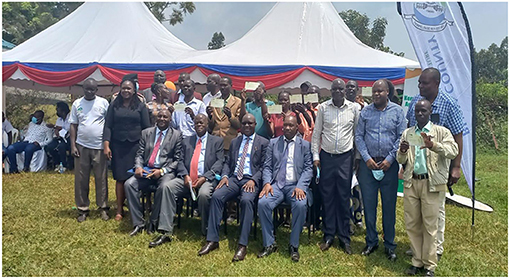
Plate 7. Parents of the student who benefited from the BMU education scholarship program display cheques on the cheque issuing day by county officials. The ceremony was graced by Permanent Secretary Fisheries, aquaculture and Blue Economy, CEC Livestock, Fisheries and Agribusiness (Busia County), Vice-Chancellor – Maseno University, and Director General KMFRI.
The seascape aquapark model has also helped in leveraging the cost of investment (purchase of boats, nets, and operation cost) for fishing by small-scale fish traders who are now able to make savings and have cash just to buy fish which are readily available from the cage enterprise. The community-based cage enterprise has also helped in eliminating sex for fish (Jaboya) behavior which was prevalent among the fisherfolk communities since the accessibility of fish by local traders is not based on sex patronage. This has caused a significant reduction in HIV prevalence and youth-related crimes in Busia County.
In the long term, the model opens up an opportunity for the establishment of management service provision companies by young graduates. The high volumes of production at the pilot aquaparks are spurring growth through the backward and forward linkages and the multiplier effect that is turning the aggregated production areas into drivers of economic growth. This model has demonstrated that producing fish in aggregated production units is cheaper and able to realize a big profit compared to production from single ponds. Also, one enjoys economies of scale since seeds and feeds are sold at reduced prices in bulk and delivered in bulk directly to the aqua park by the companies. This is mainly because the bargaining power of the farmers is enhanced when they act as a consolidated unit rather than individual producers. At harvesting, buyers come to the aquapark to do bulk purchases, thus, reducing the costs of transporting fish to the markets. Fish here is harvested and sold out. Whereas, fragmented farming involves travels to access inputs and also selling harvested mature fish to the market, which at times experiences fewer sales and high post-harvest losses. The model, therefore, reduces post-harvest losses leading to higher returns to the farmers from the fish farming business.
Based on the business enterprise budget for the landscape and seascape aquapark model (Table 1), smallholder farmers running single isolated entities make less profit compared to clustered aquaparks (Table 1). For the commercialization of smallholder fish farming, aquapark models fit the bill. There is a need for policies at county or national levels to encourage community groupings through cooperatives to facilitate bulk fish farming in aquaparks. With clustered farming, county governments can organize security and subsidy purchases for the farmers, which translates directly to profitability.
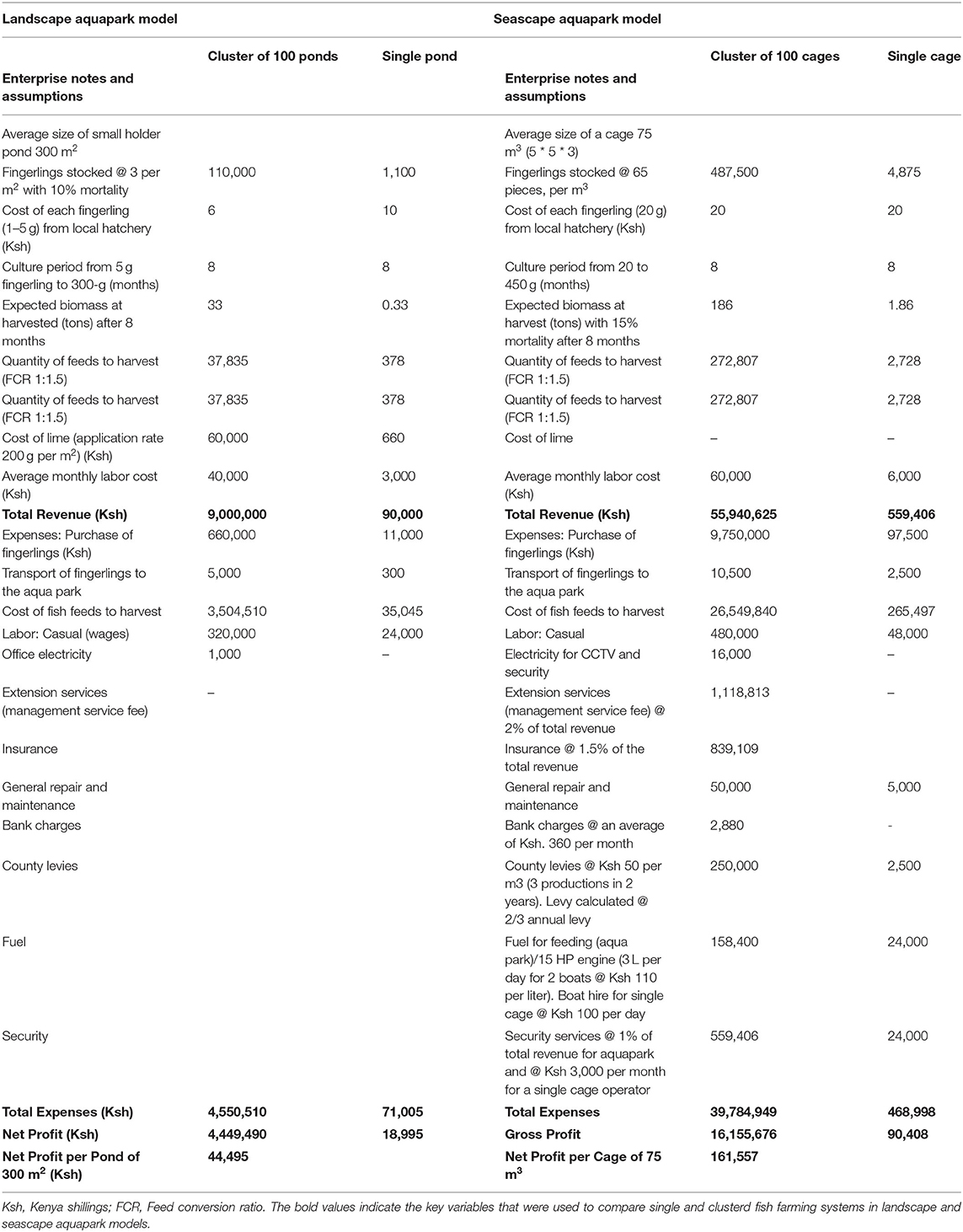
Table 1. Business enterprise budget comparing fragmented and aggregated fish farming systems in landscape and seascape aquapark model in Busia county.
Environmental Relevance
Over the past few decades, the environmental impact of aquaculture has been a popular topic of discussion – one that has not always been the most positive. However, the environmental impact of aquaculture is completely dependent upon the species being farmed, the intensity of production, and the location of the farm. Common criticisms were related to nutrient and effluent buildups, the impact of fish farms on local wild fisheries concerning disease and escaping, and environmental degradation due to the site's location. The negative environmental impacts of aquaculture had are well-understood [Global Seafood Alliance (GSA), 2019]. Nutrient buildup happens when there is a high density of fish in one area. Fish produce waste, and their waste has the potential to build up in the surrounding area. This can deplete the water of oxygen, creating algal blooms and dead zones. Farmers' usage of antibiotics to prevent disease created concern about the effect of the drugs on the ecosystem around the cages, including wild fish. Many also worried that the escape of non-native fish would cause wild fish to compete for food, potentially displacing the native fish. These were all valid criticisms given that the industry was just beginning to learn how to cope with issues as they came up, as any new industry does. Fortunately for the aquaculture industry and the planet's wellbeing, much progress has been made in the name of sustainability.
In Busia County, for instance, the development of the aquapark model has prompted researchers from the University of Eldoret and KMFRI to develop standard biosecurity measures that will guide management and operations in the hatcheries, landscapes, and seascapes farms to address environmental concerns from these enterprises. Also, the cages are normally sited in areas with strong currents to disperse the effluent and prevent the buildup of nutrients. In addition, there is potential for the introduction of IMTA technologies to extract biowastes from cages. Feasibility studies for creating IMTA in Busia County are currently being done by researchers from the Maseno University and KMFRI. Fortunately, landscape aquaculture has been noted to have a minimal impact on local ecosystems as pond effluents are easily directed into nearby wetlands for ecological treatments [Global Seafood Alliance (GSA), 2019]. The wetland plants benefit from the nutrient-rich pond effluents and this flourishes wetland biodiversity flora and fauna.
Farmed fish is highly resource-efficient, especially when compared with other animal proteins (beef, pork, chicken). The feed conversion ratio, which is the measurement of how much feed it takes to produce the protein, is 1.1 [Global Seafood Alliance (GSA), 2019]. This means that essentially one pound of feed produces one pound of protein. The feed conversion ratios for beef, pork, and chicken vary between 2.2 and 10 [Global Seafood Alliance (GSA), 2019]. As a result, fish protein retention, as well as energy retention, is remarkably high as well. As farmed fish are closely monitored in comparison to wild fish, farmers have more control over variables. Farmed fish are generally free of environmental contaminants like mercury and heavy metals as they exclusively eat human-processed feed. Fish feed's toxin levels are regulated. With the industry's desire to lessen its environmental impact coupled with the help of technological development, aquaculture has vastly improved in recent years. Farmed fish should no longer be dismissed as unsustainable. This resource-efficient protein can fill the gap in supply to meet the demand of the world's growing population. The tools are now available to assist farms in developing sustainably, and it is up to farmers to take advantage of them. The bulk production of fish from the aggregation model as piloted by Busia County will also help in promoting minimum dietary diversity requirements by complimenting other agriculture value chains (crops and livestock) for enhanced nutrition in the community.
Interventions to Facilitate Aquaculture Park Model in Busia County
Busia County has adopted an aquaculture pro-poor Market Systems Development Strategic Approach, which focuses on growing the wealth and income of the fisheries primary producers and traders by applying and seeks to create more accessible and inclusive aquaculture value chain equity partnership where the rural poor pool their capital with others to gain an ownership interest in a larger property. The purpose of this pro-poor market development approach is to increase the economic opportunities for large numbers of financially weak primary producers by providing a path for them to escape poverty and generate wealth. Specifically, this approach aims to catalyze a process that results in (a) a competitive market system where actors can effectively innovate, upgrade and add value to their products and services to match market demands and maintain or grow market share (b) inclusive development by delivering a sustainable flow of benefits to a range of actors, including the poor and otherwise marginalized as well as to society as a whole (c) resilient growth where system actors can address, absorb and overcome shocks in the market, policy environment, resource base and other aspects of the system.
To achieve the objectives of the pro-poor market development approach for the sustainable impact of the aquaculture park model to be realized, Busia County Fisheries Directorate in collaboration with the Aquaculture Business Development Programme (ABDP) initiated the organization of countywide community-based structures, i.e., Fish Farmers Cooperatives/Associations at the subcounty level and cluster-based smallholder aquaculture groups at the ward level to coordinate a synchronized input sourcing distribution production system and marketing system as illustrated (Figure 5).
To further enhance the above approach, the county is treated as one production unit where the individual smallholder groups or clusters are linked to the aquaparks established at the subcounty level for extension support, input distribution, and marketing of products as illustrated (Figure 6).
In a bid to continuously produce quality and affordable fish feeds and fingerlings for fish farmers, the Directorate of Fisheries has upgraded its fish breeding centers, fish feed factory, and fish market in the county. In the past, getting quality inputs has been a challenge, where farmers had to travel long distances and end up with expensive and low-quality inputs resulting in poor fish growth. This led to low aquaculture production and low returns on investment for the farmers. Aquaculture can have a positive impact on economic growth and countries' trade balances when targeting export fish markets (Bush and Belton, 2012; Ponte et al., 2014). Reviving these enterprises will ensure continuous production in the aquaparks and for the smallholder farmers, thus making profits (income) and ensuring food security, and hence, alleviating poverty in the county.
Sustainability and Opportunities for Replication in Other Counties
For sustainability, there is also a need for strong collaborations between and among counties. This will help pull resources and enhance the production capacities of the various farmers within the collaborating counties. The replicability of the aquapark concept in other counties, especially in the Lake Region Economic Block (LREB), which houses 14 counties, is possible. For example, the Siaya County hosts the Yala wetland, which is estimated to be 17,000 ha. With efficient and sustainable fish production models, the Yala wetland alone can saturate local fish demand in the Kisumu City and beyond. The economic blueprint for the LREB identifies fisheries and aquaculture as strong pillars for socioeconomic growth. The presence of lakes in the region indicates the upward economic potential of fishing and fish farming in the region. There is additional potential for intensive aquaculture. The main impediments to the optimum aquaculture productivity in the region include subsistence farming rooted in low levels of education among farmers and insufficient modernized farming methods. These impediments are related to the fact that most agricultural activity occurs on small farm holdings that limit yields. Since these counties are close to Lake Victoria, the conditions are not so different from those in Busia. This means that these counties can either in collaboration with Busia (or independently) establish such parks borrowing from the lessons learned from Busia's success story.
Policy Implications of the Aqua Park Concept
To anchor and strengthen these aqua park fish production systems further, there is a need for supportive and elaborate policies tackling the different supporting components of the aquapark concept. Such policies can touch on access to credit facilities and access to aquaculture inputs (including subsidies). To cushion the farmers from undue competition from imported fish, there is a need for policies touching on the importation of fish into the county (and maybe regulating fish importation into the country in general). This will entrench aquapark production units into county and country laws. Policies supporting and protecting allied sectors like agriculture (for production of fish feed inputs), feed production, importation, and sale should also be formulated, reevaluated, or changed to be in line with the concept of aqua park. It is only through such proactive measures that the model can be sustainable, more productive, and relevant to the livelihoods of smallholder farmers in Busia and other counties that are keen on adopting it. Since it has been demonstrated that collaboration among different intuitions has contributed to the success of the concept, such policies must be based on scientific evidence and data collected for the field, analyzed, and interpreted by experts in the different sectors related to aquaculture and food production systems.
Conclusions and Recommendations
Amid declining agricultural productivity, farm-level efficiency, and persistent food security problems, land fragmentation is emerging as a key empirical and policy question in Kenya. This fragmented production structure is the single largest bottleneck to increasing primary production and productivity among smallholder fish farmers in Busia County. There is a need for a strategic paradigm shift in the smallholder aquaculture development policy and approaches to enable aggregated production of fish under a fragmented land tenure. Preliminary benefits accruing from economies of scale resulting from aggregated production systems (aquapark concept) being implemented in Busia County are promising not only to increase aquaculture production but also to reduce pressure on the fisheries of Lake Victoria and help toward conservation and sustainable utilization of fisheries. The aquaparks provide a commercially sustainable view of aquaculture growth and expansion for employment and economic growth. The realization of smallholder community-owned large-scale fish farms through aquapark production units offers a window for dynamism, and technical change necessary for the commercialization of smallholder aquaculture under a fragmented land tenure system.
Ethics Statement
Written informed consent was obtained from the individual(s) for the publication of any potentially identifiable images or data included in this article.
Author Contributions
SK, JI, EO, JM, NO, HO, and DK: data collection. JM, NO, KO, and HO: review. KO: data analysis. JI: analysis. EO: manuscript drafting. TO: leading author and concept development. MO: policy formulation. All authors contributed to the article and approved the submitted version.
Conflict of Interest
The authors declare that the research was conducted in the absence of any commercial or financial relationships that could be construed as a potential conflict of interest.
Publisher's Note
All claims expressed in this article are solely those of the authors and do not necessarily represent those of their affiliated organizations, or those of the publisher, the editors and the reviewers. Any product that may be evaluated in this article, or claim that may be made by its manufacturer, is not guaranteed or endorsed by the publisher.
Acknowledgments
This work was supported by the Kenya Climate-Smart Agriculture Project (KCSAP) Component 1 Project ID: P154784 to County Government of Busia (Directorate of Fisheries) and Component 2 to Maseno University (Grant No. GA02–4/4 awarded to EO), KMFRI (Grant No. 4/3 & 4/5 awarded to KO and DK), and University of Eldoret (Prof. D. Liti and Dr. J. Makwali). Special attributes to Aquaculture Business Development Project (ABDP), Programme ID: 2000001132 for regular extension services in aquaculture activities in Busia County.
References
Arksey, H., and O'Malley, L. (2005). Scoping studies: towards a methodological framework. Int. J. Soc. Res. Methodol. 8, 19–32. doi: 10.1080/1364557032000119616
Aura, C. M., Musa, S., Nyamweya, C. S., Ogari, Z., Njiru, J. M., Hamilton, S. E., et al. (2021). A GIS - based approach for delineating suitable areas for cage fish culture in a lake. Lakes Reservoirs: Res. Manag. 26, e12357. doi: 10.1111/lre.12357
Brummett, R. E., Lazard, J., and Moehl, J. (2008). African aquaculture; realizing the potential. Food Policy 33, 371–385. doi: 10.1016/j.foodpol.2008.01.005
Bush, S. R., and Belton, B. (2012). Out of the factory and into the fish pond can certification transform Vietnamese Pangasius? Food Pract. Transit. Chang. Food Consum. Retail Prod. Age Reflexive Mod 257–290
FAO (2011). Global Capture Production Statistics Dataset 1950–2009 and Global Aquaculture Production Statistics dataset (Quantity and Value) 1950–2009. Rome: FAO.
FAO and World Vision (2021). Maximizing nutrition in fisheries and aquaculture – A guidance note on impact pathways for mainstreaming nutrition based on a case study from Kenya. Rome
FAO. (2021). “Sustaining the profitability of agriculture,” in Economist's Role in the Agricultural Sustainability Paradigm, Fisheries Technical Paper No. 408/1 (Rome: FAO), 67.
He, G., Liu, X., and Cui, Z. (2021). Achieving global food security by focusing on nitrogen efficiency potentials and local production. Global Food Security 29, 100536. doi: 10.1016/j.gfs.2021.100536
Henriksson, P. J. G., Troell, M., Banks, L. K., Belton, B., Beveridge, M. C. M., Klinger, D. H., et al. (2021). Interventions for improving the productivity and environmental performance of global aquaculture for future food security. One Earth. 4, 1220–1232. doi: 10.1016/j.oneear.2021.08.009
Hoppe, R. A., and Banker, D. E. (2006). “Structure and finances of united states farms: 2005 family farm report,” in Vol Economic I. USDA Economic Research Service. doi: 10.2139/ssrn.923592
Ikerd, J. E. (1996). “Sustaining the profitability of agriculture,” in Economist's Role in the Agricultural Sustainability Paradigm (San Antonio, TX: University of Missouri).
Jayne, T. S., Chamberlin, J., Traub, L., Sitko, N., Muyanga, M., Yeboah, F. K., et al. (2016). Africa's changing farm size distribution patterns: the rise of medium-scale farms. Agric. Econ. 47(S1), 197–214. doi: 10.1111/agec.12308
Jayne, T. S., Chapoto, A., Sitko, N., Nkonde, C., Muyanga, M., Chamberlin, J. (2014). Is the scramble for land in Africa foreclosing a smallholder agricultural expansion strategy? J. Intl. Affairs 67, 35–53.
Jayne, T. S., Yamano, T., Weber, M., Tschirley, D., Benfica, R., Chapoto, A., et al. (2003). Smallholder income and land distribution in Africa: implications for poverty reduction strategies. Food Pol. 28, 253–275. doi: 10.1016/S0306-9192(03)00046-0
Joly, G., Nikiema, J. (2019). Global Experiences on Waste Processing With Black Soldier Fly (Hermetia illucens): From Technology to Business. Colombo, Sri Lanka: International Water Management Institute (IWMI). CGIAR Research Program on Water, Land and Ecosystems (WLE). 62p. (Resource Recovery and Reuse Series 16). doi: 10.5337/2019.214
Kiplimo, L. B., and Ngeno, V. (2016). Understanding the Effect of Land Fragmentation on Farm Level Efficiency: An Application of Quantile Regression-Based Thick Frontier Approach to Maize Production in Kenya
KMFRI (2017). Kenya's Aquaculture Brief 2017: Status, Trends, Challenges and Future Outlook. Kenya Marine and Fisheries Research Institute, Mombasa, Kenya. 12.
KMFRI (2021). Advancing Development of Kenya's Blue Economy: Highlights of KMFRI Marine Research and Innovation (2020/2021).
Levac, D., Colquhoun, H., and O'Brien, K. K. (2010). Scoping studies: advancing the methodology. Implementation Sci. 5, 69. doi: 10.1186/1748-5908-5-69
Lynch, A. J., Cowx, I. G., Fluet-Chouinard, E., Glaser, S. M., Phang, S. C., Beard, T. D., et al. (2017). Inland fisheries – invisible but integral to the UN Sustainable Development Agenda for ending poverty by 2030. Global Environ. Change 47, 167–173. doi: 10.1016/j.gloenvcha.2017.10.005
MacDonald, J., Korb, P., Hoppe, R. (2013). Farm Size and the Organization of United States Crop Farming.
Marta, C., Isabel Costa, A., Helena, P., Rui, M., Aires, O.-T., Ribeiro, A. C. M., et al. (2020). Integrated multi-trophic aquaculture: a laboratory and hands-on experimental activity to promote environmental sustainability awareness and value of aquaculture products. Front. Marine Sci. 7, 156. doi: 10.3389/fmars.2020.00156
Masters, W., Djurfeldt, A., De Haan, C., Hazell, P., Jayne, T. S., Jirstrom, M., et al. (2013). Urbanization and farm size in Asia and Africa: implications for food security and agricultural research. Global Food Secur. 2, 156–165. doi: 10.1016/j.gfs.2013.07.002
Munguti, J., Obiero, K., Orina, P., Mirera D., Kyule D., Mwaluma J., et al. (eds.). (2021). State of Aquaculture Report 2021: Towards Nutrition Sensitive Fish Food Production Systems. Nairobi: Techplus Media House. 190.
Muthoka, M., Ogello, E. O., Ouma, H., Obiero, K. (2021). Periphyton technology enhances growth performance and delays prolific breeding of Nile Tilapia, Oreochromis niloticus post-fingerlings. Asian Fish. Sci. 34, 290–300 doi: 10.33997/j.afs.2021.34.4.002
Obiero, K., Cai, J., Abila, R., and Ajayi, O. (2019). Kenya: High aquaculture growth needed to improve food security and nutrition. World Aquaculture Performance Indicators (WAPI) Policy Brief. FAO, IFAD and Kenya Marine and Fisheries Research Institute (KFMRI). Available online at: http://www.fao.org/3/ca4693en/ca4693en.pdf (accessed February 14, 2022).
Obwoge, W. Z., Ogello, E. O., Getabu, A., Omondi, R. (2022). Biofloc system improves protein utilization efficiency and growth performance of Nile tilapia, Oreochromis niloticus fry: Experimental evidence. Aqua. Fish Fisheries. 2022, 1–10. doi: 10.1002/aff2.32
Ogello, E. O., and Munguti, J. (2016). Aquaculture: A promising solution for food insecurity, poverty and malnutrition in Kenya. African J. Food Agric. Nutr. Dev. 16, 11331–11350. doi: 10.18697/ajfand.76.15900
Ogello, E. O., Outa, N. O., Obiero, K. O., Kyule, D.N, and Munguti, J. M. (2022). The prospects of biofloc technology (BFT) for sustainable aquaculture development. Sci. African 14, e01053. https://doi.org/10.1016/j.sciaf.2021.e01053
Ogello, E. O., Wullur, S., and Hagiwara, A. (2019). Blending fishwastes and chicken manure extract as low- cost and stable diet for mass culture of freshwater zooplankton, optimized for aquaculture. IOP Conf. Series Mater. Sci. Eng. 567, 012022. doi: 10.1088/1757-899X/567/1/012022
Outa, N. (2021). Freshwater Integrated Multitrophic Aquaculture (FIMTA) technology in Lake. doi: 10.14293/111.000/000016.v1
Penrose-Buckley, C. (2007). Producer Organisations: a Guide to Developing Collective Rural Enterprises. Oxford: Oxfam. doi: 10.3362/9780855988357
Phillips, M., Subasinghe, R., Clausen, J., Yamamoto, K., Mohan, C. V., Padiyar, A., et al. (2007). Aquaculture production, certification and trade: challenges and opportunities for the small-scale farmers in Asia. Aquac. Asia XIII, pp. 3–8.
Ponte, S., Kelling, I., Jespersen, K. S., and Kruijssen, F. (2014). The blue revolution in Asia: upgrading and governance in aquaculture value chains. World Dev. 64, 52–64. doi: 10.1016/j.worlddev.2014.05.022
Sitko, N. J., Jayne, T. S. (2014). Structural transformation or elite land capture? The growth of “emergent” farmers in Zambia. Food Policy. 48, 194–202. doi: 10.1016/j.foodpol.2014.05.006
White, M. P., Alcock, I., Wheeler, B. W., Depledge, M. H. (2013). Would you be happier living in a greener urban area? A fixed-effects analysis of panel data. Psychol. Sci. 24, 920–928. doi: 10.1177/0956797612464659
Keywords: aquapark, aggregated aquaculture production, management service provision units, synchronized production, smallholder community, economies of scale
Citation: Odende T, Ogello EO, Iteba JO, Owori H, Outa N, Obiero KO, Munguti JM, Kyule DN, Kimani S and Osia MM (2022) Promoting Sustainable Smallholder Aquaculture Productivity Through Landscape and Seascape Aquapark Models: A Case Study of Busia County, Kenya. Front. Sustain. Food Syst. 6:898044. doi: 10.3389/fsufs.2022.898044
Received: 16 March 2022; Accepted: 30 May 2022;
Published: 29 June 2022.
Edited by:
Amin Mousavi Khaneghah, State University of Campinas, BrazilReviewed by:
Yadolah Fakhri, Hormozgan University of Medical Sciences, IranNyong Princely Awazi, The University of Bamenda, Cameroon
Copyright © 2022 Odende, Ogello, Iteba, Owori, Outa, Obiero, Munguti, Kyule, Kimani and Osia. This is an open-access article distributed under the terms of the Creative Commons Attribution License (CC BY). The use, distribution or reproduction in other forums is permitted, provided the original author(s) and the copyright owner(s) are credited and that the original publication in this journal is cited, in accordance with accepted academic practice. No use, distribution or reproduction is permitted which does not comply with these terms.
*Correspondence: Erick O. Ogello, ZXJpY2sub2dlbGxvQGdtYWlsLmNvbQ==
 Timothy Odende
Timothy Odende Erick O. Ogello
Erick O. Ogello Jacob O. Iteba
Jacob O. Iteba Henrick Owori
Henrick Owori Nicholas Outa
Nicholas Outa Kevin O. Obiero
Kevin O. Obiero Jonathan M. Munguti
Jonathan M. Munguti Domitila N. Kyule
Domitila N. Kyule Shadrack Kimani
Shadrack Kimani Moses M. Osia5
Moses M. Osia5